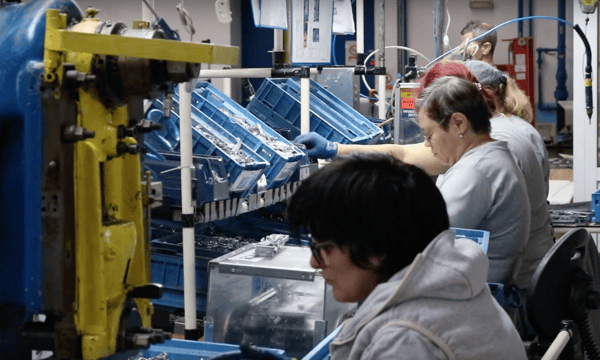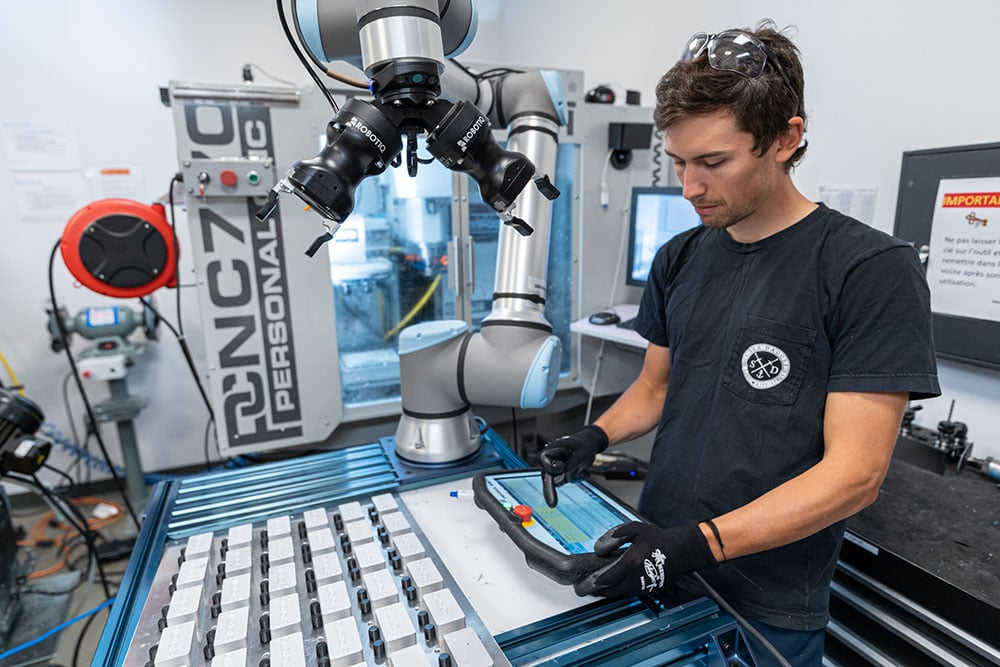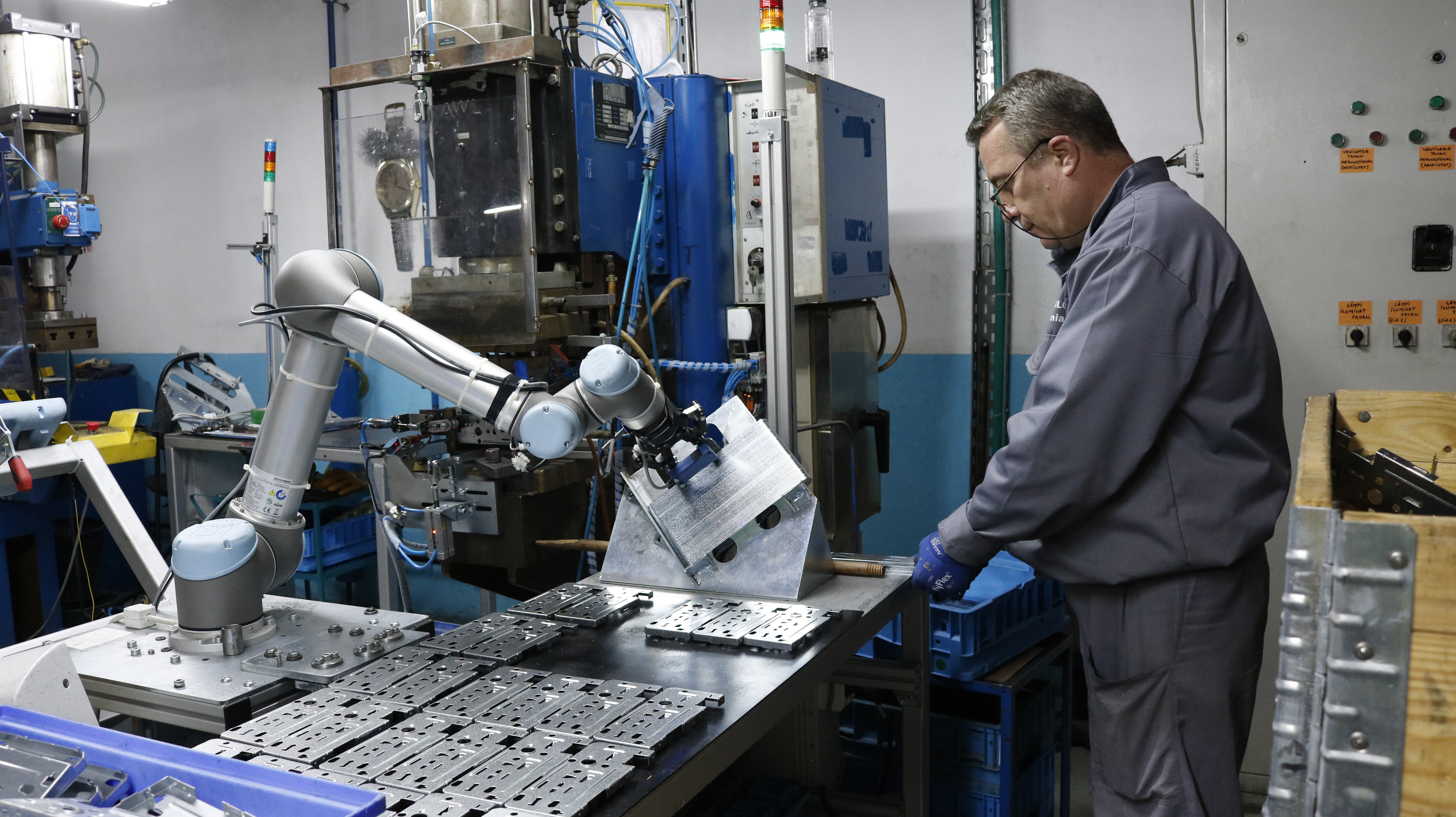5 Hazardous Jobs Nobody Should Care if a Robot Steals

Posted on Feb 13, 2020 7:00 AM. 6 min read time
Some people worry about robots taking their jobs… until you mention unhealthy jobs. Nobody should care if robots do these hazardous jobs.
It's often reported that workers are afraid robots will steal their jobs. However, this is not the whole story. There are some tasks that people are more than happy for a robot to take over.
A recent survey of 1000 employees found that 83% of workers want robots to take over unhealthy jobs and 77% want them to take over the directly hazardous jobs. What's more, 70% of survey respondents thought that robots will allow them to learn more and move to more qualified positions.
The health and safety aspect of robotics is one which is still often overlooked by companies looking to invest in robotics.
The effects of these health-related issues on a business should not be underestimated. According to statistics from the government in the UK, for example, 1.3 million workers suffer from work-related ill health and a lot of these incidents could be reduced by using robots.
Here are 5 unhealthy and hazardous jobs that nobody would care if a robot stole.
1. Repetitive pick and place
One of the most shocking statistics that we encountered here on the blog in the past few years is the news that 35% of work days lost are due to musculoskeletal injuries. This is concerning fact shows the direct effect of health-related injuries on the running of your business.
Repetitive tasks, such as pick and place, are especially problematic as they include all of the risk factors of work-related musculoskeletal disorders.
These risk factors include:
- Fixed or constrained body positions.
- Continual repetition of movements.
- Forces concentrated on small parts of the body, such as hand or wrist.
- A pace of work that does not allow sufficient recovery between movements.
Repetitive pick and place tasks might seems harmless, but over time they can be extremely unhealthy and hazardous jobs.
Robots are a perfect way to take over these tasks and allow workers to move to safer jobs — which should be far more intellectually stimulating.
 Repetitive work at Assa Abloy Romania
Repetitive work at Assa Abloy Romania
2. Scanning the inside of tanks and pipes
Another job which can be both dangerous and dirty is inspection of liquid tanks and pipelines. A recent example is scanning the inside of milk tanks in the food production industry. In this case, autonomous mobile robots can be used to travel along the inside of the tanks and detect for potentially dangerous cracks and leaks.
Without robots, this task is extremely difficult to achieve. Pipeline inspection has traditionally been carried out with techniques like hydrostatic pressure testing, ultrasound, and magnetic testing.
There are various potential dangers associated with doing this type of inspection manually, including:
- High pressure release of liquid or gas from cracked pipes.
- Contact with hazardous fluid.
- Requires people to enter large, confined tanks.
Although incidents are likely to be rare, compared to some of the other jobs on this list, using a robot to inspect tanks and pipes is a good way to remove the safety issues and allow workers to focus on the analysis aspects of inspection.
A similar type of robot is now being used by some aerospace manufacturers to scan airplane fuselages.
3. Space and undersea exploration
It's worth noting the extreme level of jobs that robots are making possible. Exploration and investigation of inaccessible places is exactly the sort of job that is just impossible without a robot.
Robots have been used for both space and undersea exploration for decades. The oil and gas industry use them routinely to check their underwater equipment. Given the increasing demand for sea-based energy solutions — including offshore wind farms and tidal power generators — it seems likely that robots will continue to play a vital part in the energy sector.
At this level of danger to human life, any objections to using robots become irrelevant. Nobody could disagree that sending a robot to the depths of the ocean to investigate an undersea oil-leak is far more preferable than sending a person.
4. Welding
At a much more day-to-day level of danger, welding can be a remarkably dangerous job. As it is such a common job, it's easy to overlook the hazards of welding but potential welding dangers range from small electric shocks all the way up to causing the onset of Parkinson's Disease.
The most common causes of danger to human welders include:
- Electrical shocks from the welding machine itself.
- Exposure to harmful gasses and fumes.
- Excessive noise and resultant damage to hearing.
- Fires and explosions due to the high heat of welding.
- Damage to eyes due to searing white light (known as "welder's flash").
- Burns from melting hot metals.
I could go on but you you get the point… it's a dangerous job.
Robotics welding is increasingly becoming a very effective way to reduce or remove the hazards associated with welding. Robots also have the benefit that they improve the accuracy, efficiency, and consistency of welding, and they help to combat the rising skills shortage caused by a lack of trained welders in the jobs market.
5. Sanding and polishing
Like welding, sanding and polishing are such common jobs that we often fail to notice the dangers.
There are two main dangers caused by manual sanding and polishing:
- Respiratory illnesses caused by breathing particles of wood or other material. Work related lung-disease is linked to 12,000 each year in the UK alone.
- Musculoskeletal disorders caused by vibrating sanding machines.
One major problem with sanding and polishing is that, on the surface, they do not appear hazardous at all. Musculoskeletal disorders develop over a long time so they are hard for workers to notice until it's too late. Respirators (particularly temporary ones) can introduce a false sense of security as they are not always as effective as people think they are.
Robots are a great way to almost entirely remove the danger of sanding tasks. They allow workers to move onto more rewarding tasks and increase worker health in the long term.
And with benefits like this, who could object to a robot taking over these hazardous jobs.
Which unhealthy or hazardous job would you not mind giving to a robot? Tell us in the comments below or join the discussion on LinkedIn, Twitter, Facebook or the DoF professional robotics community.





Leave a comment